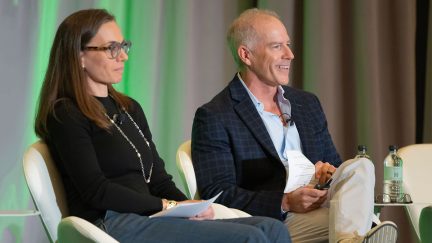Never miss a story — sign up for PLANADVISER newsletters to keep up on the latest retirement plan adviser news.
Retirement Planning High on Advice Agenda
According to a news release about MainStay Investments’ Across Generations research, women seem to be more concerned about income planning in retirement, which rounded out women’s top reasons for using an adviser, with 52% of women citing that as a reason to visit an adviser.
Meanwhile, men ranked estate planning as the third most important reason for using an adviser (48%) and both men and women overwhelming agreed (88% and 91% respectively) that their financial adviser would play an important role in helping their spouse manage the assets when they pass away.
“These findings reinforce a situation we have both heard about anecdotally and have observed repeatedly for many years. Married couples often believe they are on the same page when it comes to financial goals, but when advisers begin to talk with them individually, it is apparent that they are often carrying different play books altogether.” said Mike Coffey, managing director of MainStay Investments, in the news release. “It’s the adviser’s obligation to get the husband and wife together physically in the same room and mentally on the same page.”
Coffey offered the following suggestions for advisers:
- When it comes to financial planning, both sides of today’s couples want to be involved: after all, 73% married men and women say that they meet with their financial adviser together.
- When selecting a financial adviser, more women (55%) than men (42%) consider communication skills an extremely important attribute, especially late boomer women (59% vs. 38% for late boomer men). While men are seemingly more direct and have a tendency to act on instinct rather than consensus, women have a tendency to be much more methodical in their decisionmaking process, often discussing their options openly with their spouse and/or peers
- The majority of men and women agreed (82%) that consolidating assets with one adviser would make it simpler and easier to manage their money and allow his/her adviser to do an effective job of asset allocation. In addition, 86% of both men and women indicate that it would also lead to better recommendations on how to meet their needs (insurance, long-term care, etc).
Generally, MainStay discovered that while the majority of married women (81%) say they share equal responsibility for decisions about investing and long- term financial planning with their spouse, only 44% of married men make this claim. In fact, the majority of married men (56%) say that they make most of these decisions on their own.
“The important thing for advisers to remember is that they will risk losing assets under management (AUM) if they view their client as only one spouse, and not the couple. Long-term, the adviser risks losing AUM if he doesn’t see the husband and wife as a two-part client,” said Chris Parisi, national sales manager of MainStay Investments.
The Across Generations study was conducted by an online research firm in May 2006. The study polled 1,512 individuals between the ages of 27 and 83, covering four different age groups: GenXers (born 1965-1979), Late Baby Boomers (1956-1964), Early Baby Boomers (1946-1955), and Seniors (1945- 1923). Respondents had at least $250,000 in investable assets. The analysis was broken down by generational cohorts and sub-divided by gender.
You Might Also Like:

Rethinking Opportunities for RIA Growth

Advisers Step Up as Clients Face Market Uncertainty

AI Firm Jump Announces Integrations with eMoney and RightCapital
« Personal Savings Increase Needed to Offset Lack of Pensions